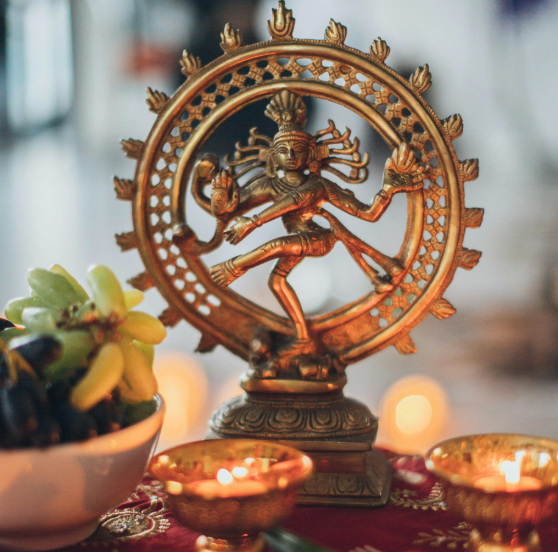Hinduism, often regarded as the world’s oldest living religion, transcends the realm of rituals and worship to encompass an aesthetic and holistic way of life. Rooted in the profound philosophies of the Vedas, Upanishads, and other ancient scriptures, Hinduism offers timeless wisdom that inspires harmony, self-realization, and universal well-being. Its teachings emphasize living a life aligned with nature, truth, and dharma (righteousness), making it not just a religion but a comprehensive framework for leading an enlightened existence.
This article explores the multifaceted aesthetic dimensions of Hinduism, delving into its principles, practices, and philosophies that continue to shape lives across the globe.
1. The Essence of Hinduism: Beyond Religion
Hinduism is not confined to a set of dogmatic beliefs. Instead, it is a way of understanding the universe and humanity’s place within it. The term “Sanatana Dharma”, often used to describe Hinduism, translates to “eternal duty” or “eternal truth,” reflecting its timeless and universal essence.
- Key Features:
- Emphasis on self-realization and spiritual growth.
- Acknowledgement of multiple paths to divine truth, including devotion (bhakti), knowledge (jnana), and action (karma).
- A celebration of diversity and inclusion, where every individual’s journey is unique and respected.
2. Spiritual Aesthetics: The Pursuit of Truth and Beauty
Hinduism celebrates the intrinsic connection between truth (satya) and beauty (sundaram). The religion sees the material and spiritual worlds as intertwined, where the aesthetic experience leads to spiritual enlightenment.
- Temple Art and Architecture: Magnificent temples like the Brihadeeswarar Temple in Tamil Nadu or the Sun Temple in Konark stand as testaments to the aesthetic sensibilities of ancient Hindus. These structures symbolize the universe, with intricate carvings depicting stories from scriptures like the Mahabharata and Ramayana.
- The Role of Nature: Hinduism’s reverence for rivers, mountains, and forests highlights its intrinsic ecological awareness. Sacred sites like the Ganga River and the Himalayas are not just places of worship but also sources of inspiration and natural beauty.
3. Core Philosophies: Dharma, Karma, and Moksha
At its heart, Hinduism revolves around three central concepts:
- Dharma: The moral and ethical duties unique to each individual, guiding them to live righteously.
- Example: A teacher’s dharma is to impart knowledge, while a soldier’s is to protect.
- Karma: The universal law of cause and effect, teaching that every action has a consequence.
- Example: Helping others selflessly leads to positive outcomes in life, while harmful actions bring challenges.
- Moksha: The ultimate goal of liberation from the cycle of birth and death (samsara), attained through wisdom, detachment, and devotion.
4. Daily Practices: Infusing Spirituality into Life
Hinduism seamlessly integrates spirituality into daily life, emphasizing mindfulness and intention in every action.
- Rituals and Worship: From lighting a lamp in the morning to chanting mantras like the Gayatri Mantra, daily rituals create a sense of peace and connection with the divine.
- Yoga and Meditation: Rooted in Hindu scriptures, practices like Ashtanga Yoga and meditation help individuals achieve physical and mental harmony.
- Festivals and Celebrations: Vibrant festivals like Diwali and Holi are not just cultural events but also opportunities for spiritual reflection and community bonding.
5. Aesthetic Expressions: Arts, Music, and Literature
Hinduism’s aesthetic ethos finds expression in various art forms, each offering a glimpse into its spiritual depth.
- Classical Dance: Bharatanatyam, Kathak, and Odissi are more than performances—they narrate stories of gods and goddesses, blending rhythm with devotion.
- Music: The ragas of Indian classical music evoke emotions that resonate with the soul, reflecting the Hindu understanding of sound as a sacred medium.
- Literature: Texts like the Bhagavad Gita and Ramayana are not just spiritual guides but also literary masterpieces offering moral and philosophical insights.
6. Environmental and Social Harmony
Hinduism emphasizes living in harmony with nature and society.
- Ecological Wisdom: Practices like the worship of Tulsi (holy basil) and the protection of sacred groves highlight Hinduism’s commitment to environmental conservation.
- Social Ethics: Concepts like Vasudhaiva Kutumbakam (“the world is one family”) and Seva (selfless service) promote universal brotherhood and altruism.
7. The Relevance of Hinduism Today
In an age of materialism and ecological crises, Hinduism’s teachings hold immense relevance:
- Mental Health and Well-being: Practices like mindfulness, yoga, and meditation offer solutions to modern stress and anxiety.
- Sustainability: Hinduism’s respect for nature inspires sustainable living practices.
- Inclusivity: The acknowledgement of diverse spiritual paths encourages acceptance and harmony in a globalized world.
Conclusion: Embracing Hinduism as a Way of Life
Hinduism, with its profound philosophies, aesthetic sensibilities, and practical teachings, is not just a religion but a holistic way of life. It encourages individuals to seek truth, embrace beauty, and live harmoniously with the world. Whether through its rich artistic heritage, daily rituals, or universal values, Hinduism continues to inspire millions, proving that its ancient wisdom is timeless and transformative.
By embracing its principles, one can find a deeper connection to the self, the community, and the cosmos, making life a journey of joy, purpose, and enlightenment.
